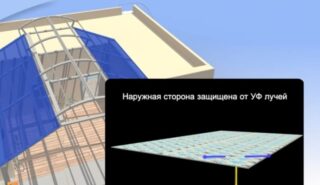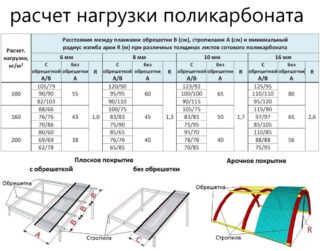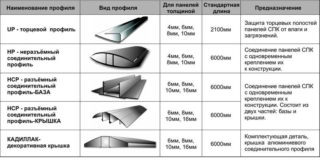The idea of assembling a veranda, gazebo or greenhouse from steel profiles and polycarbonate is good in terms of practicality and aesthetics. Its successful implementation is possible only on condition of competent planning, correct choice of materials, adherence to technologies at every stage of work. Both materials have certain properties, so fastening polycarbonate to a metal frame requires taking into account many nuances.
Features of polycarbonate
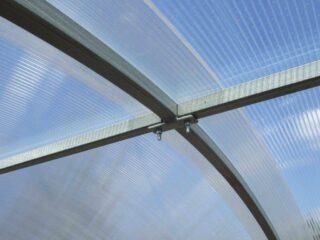
Polycarbonate is a transparent polymer material with high strength and flexibility.
There are two types:
- Monolithic. Slabs measuring 105x205 cm, 2-10 mm thick. In terms of transparency, they have 96% of those of silicate glass, exceeding it in strength by 200 times. Fastening of polycarbonate is carried out in rigid frames of window systems on walls and ceilings.
- Cellular. Consists of two or three plates connected by stiffening ribs of a certain configuration. Plates with a thickness of 4-20 mm and a format of 210x600 cm are distinguished by an average degree of transparency and flexibility. Diffuse light, available in transparent, matt and colored versions. Modern models have UV protection. Polycarbonate can be attached to special profiles or directly to the base, but with gaskets.
The scope of application of both materials in private households is wide. Roofs, fences, window canopies and greenhouses are made of them. The panels from the best manufacturers are designed for 25-30 years of service.
Risk of damage to polycarbonate on steel frame
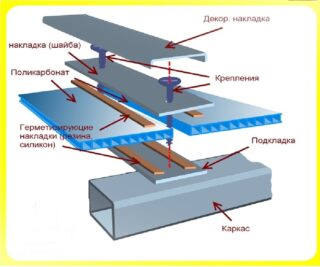
When planning to install polycarbonate on a steel pipe greenhouse, you need to know a number of features inherent in such a combination. Iron and polymer plastics have diametrically opposed compositions and performance characteristics.
Fastening polycarbonate to a metal frame using special devices should be for the following reasons:
- Panels have a coefficient of thermal expansion almost ten times that of iron. This assumes the absence of rigid fixation and the presence of damping clearances.
- At significant temperature changes, polymer sheets begin to slide over the frame due to changes in their dimensions. Since plastic is much softer than steel, it can be severely scratched.
- Condensation appears inside the honeycomb. If a gasket is not placed under the attachment points, the iron will begin to rust from contact with water. Given the specifics of the assembly, it will be extremely difficult to get to problem areas.
Ignoring such details leads to the fact that very soon after installation, the polycarbonate flooring becomes cloudy, cracked, and the base is covered with a thick layer of rust.
Outside side
You can determine the outside in the following ways:
- By the presence of special inscriptions and markings on the packaging.Manufacturers seal the boards with foil or paper.
- According to the method of packing in the package. By default, the panels are stacked with the protective cover facing up. This is done when there is no marking.
- By the thickness of the plate. The processed PVC plate is 0.1 mm thicker. You will need a caliper here.
- In a laboratory way. We'll have to look for a chemical laboratory and pay money to analyze the material in order to determine its composition.
In order not to confuse the sides during the installation process, you need to mark the surfaces with a marker, not forgetting to make an explanatory note with the decoding of your own marks.
Panels orientation
Monolithic slabs can be installed in any orientation, they are the same throughout the entire volume. The honeycomb panels must be installed taking into account the direction of the internal channels. In all cases, they should be oriented downward. This rule is justified by the need for condensate drainage, which inevitably forms during the operation of products in conditions of temperature drop. If the sheet needs to be bent, this is done perpendicular to the honeycomb.
Tilt angle
This indicator is determined by the thickness of the roofing material and the frequency of the sheathing. Each type of polymer has a certain margin of strength and elasticity. In addition, snow and wind loads must be taken into account. The thinner the slab, the steeper the angle of inclination should be. When building a flat roof, the slope should be at least 5 degrees to ensure water drainage and prevent the flooring from sagging under the weight of precipitation.
Permissible bending of a polycarbonate arch
The ratio of the minimum allowable radius and wall thickness of the panels is shown in the table:
| № | Thickness in mm | Minimum radius in cm |
| 1 | 4 | 70 |
| 2 | 6 | 105 |
| 3 | 8 | 140 |
| 4 | 10 | 175 |
| 5 | 12 | 210 |
| 6 | 16 | 280 |
| 7 | 20 | 350 |
Usually manufacturers indicate these characteristics on the packaging. Sometimes containers are thrown away even before installation. Therefore, these calculations will serve as a good help before buying and before work.
Varieties of fasteners for attaching polycarbonate to metal
To fasten the polycarbonate, galvanized self-tapping screws with a silicone press washer are used. For wood, ordinary threaded hardware is taken, and for screwing into metal with a drill at the end. This allows the connection to be made without pre-drilling a hole in the steel frames.
Profiles are made of plastic and aluminum. Plastic is used on straight and curved structures, metal only on straight sections.
There are such types of profiles:
- Connecting. Serve for joining two sheets on a wooden or steel frame. They consist of a base and a cover. The top is slammed or screwed onto the bottom.
- Corner. Used to decorate corners.
- Wall mounted. Provide a tight connection of the curtain to a vertical wall.
- End. Protect and decorate the edges of the slabs.
The open sides of the panels, where the honeycomb gaps are located, are sealed with perforated tape. It has a membrane structure, provides a free exit of condensate, preventing the penetration of dust, moisture and insects into the cavity.
Mounting and mounting methods
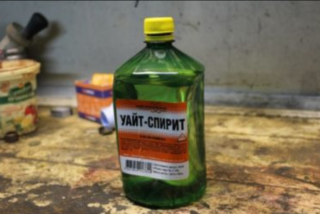
Before starting work, you need to carry out preparatory work on the steel frame. Initially, it needs to be adapted to the size of the sheet in order to minimize the amount of waste. You can profile pipes yourself or buy ready-made blanks. The step between the longitudinal supports is 70 cm in the direction of the panel, the frequency of the crossbeams is determined by their thickness and the design loads on the structure. Usually a distance of 70-140 cm is taken. The iron itself must be cleaned of rust and treated with a corrosion agent. Weld seams are grinded and painted over.
Step-by-step process of glazing with polycarbonate:
- Apply markings. Mark the frame with a marker for drilling. The panels can be attached to the base with an interval of 40-60 cm. For straight structures, the interval is larger, for curved structures it is less.
- Drill holes. This must be done in advance so that the chips do not interfere with work. Create chamfers around the edges of the holes. Mark them with a marker.
- Degrease the frame, glue the sealant to it. Transfer the holes for the holes to its surface.
- Fasten the lower parts of the connecting strips to the arcs.
- Remove the film from the sheets, attach to the frame, make holes 3-4 mm larger than the self-tapping rod.
- Attach slabs. The clamping force should be such that the thermal washer is pressed down by 0.5 mm.
In conclusion, chips are removed from the honeycomb, strips are placed, tapes are glued, plugs are mounted.
It is necessary to cut polycarbonate on a flat base with a tool with a low frequency of movement of the cutting part. A jigsaw, milling cutter or grinder with speed control will do. Drill with a sharp drill with a sharpening angle of 30 degrees. Holes are made between the stiffeners and the waste is blown out by the compressor.

